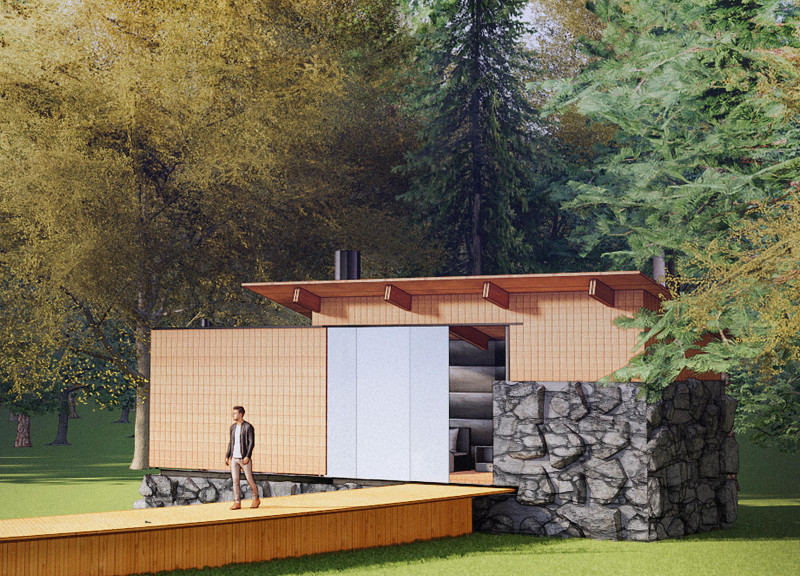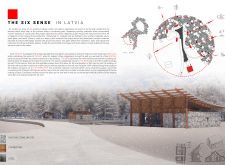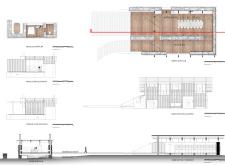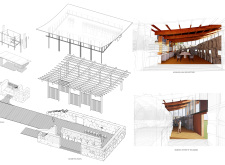5 key facts about this project
"The Six Sense in Latvia" is an architectural design centered around the cultural practice of tea. Located in a scenic area, the project consists of several building modules that illustrate different stages of tea production. Through careful planning, these structures form a path that allows visitors to engage with the process and learn more about this cultural tradition. The overall design harmonizes with the natural landscape, promoting a sense of connection with the environment.
Design Concept
The layout includes six distinct modules, each corresponding to a step in the tea-making process, from planting to serving. This arrangement encourages visitors to walk through the site, creating a journey that immerses them in the art of tea. By using a modular approach, the design maintains interest while presenting a cohesive story, inviting exploration and discovery.
Materiality
Four materials play a key role in the project: stone, steel, glass, and wood. Stone forms a solid base for the structures, grounding them in the landscape. In contrast, structural steel allows for open and airy spaces, facilitating movement within each module. Glass enhances the relationship between indoor and outdoor areas, providing views and natural light. Wood introduces a feeling of warmth, making the environment inviting and comfortable.
Spatial Composition
Each module features large operable doors that create flexibility in how spaces are used, allowing for an easy transition between public and private areas. The barn serves as the main architectural element, highlighting the use of existing materials that reflect the local history. A small museum at the entrance showcases tea culture from around the world, enriching the educational aspect of visitors' experiences.
The final area by the pond offers a peaceful spot for tea-drinking ceremonies. This space serves as a fitting conclusion to the journey, allowing visitors to appreciate tea in a tranquil setting. Here, the architecture serves its purpose, connecting people with the cultural significance of tea while promoting reflection and enjoyment.






















































